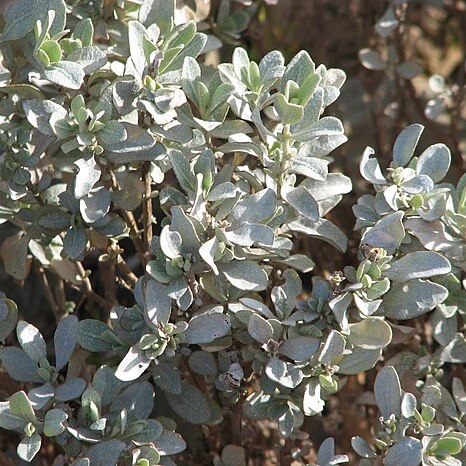A small shrub. It grows 0.5-1 m high and spreads 1-2 m across. The branches are erect. The leaves are 1-3 cm long by 2 cm wide. The base tapers to the stalk. There are small teeth along the edge. The leaves are silvery grey. The flowers are small. The male flowers are in dense clusters 2.5 cm long. The female flowers are in clusters in the axils of the lower leaves. The fruit is bladder like. It is 1.5 cm wide. There is a hard nut inside.

